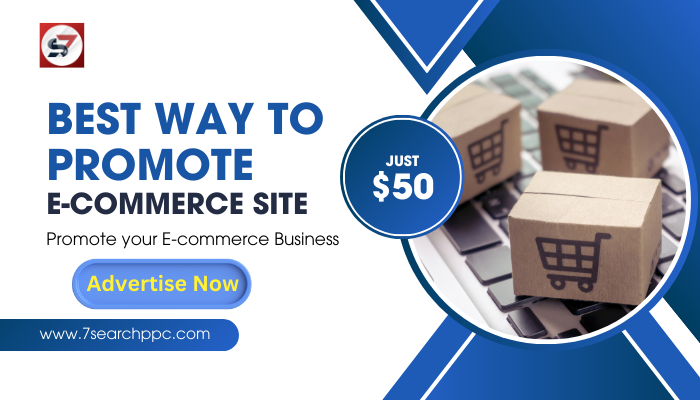In today's digital age, having an e-commerce site is essential for any business looking to reach a wider audience and increase sales. However, simply having a website is not enough. To succeed in the competitive online marketplace, you must actively
promote e-commerce site to attract visitors and convert them into customers.
 Understanding the Challenges
Understanding the ChallengesPromoting an
e-commerce site comes with its own set of challenges. With millions of websites vying for attention, it can be difficult to stand out from the crowd. Additionally, consumers have become increasingly discerning, expecting seamless user experiences and personalized interactions.
The Best Ways to Promote Your E-commerce SiteSearch Engine Optimization (SEO)SEO is crucial for improving your site's visibility in search engine results pages (SERPs). Focus on optimizing your website's content, meta tags, and images for relevant keywords related to your products or services. Additionally, building high-quality backlinks from reputable websites can help boost your site's authority and rankings.
Content MarketingCreate high-quality, engaging content that provides value to your target audience. This could include blog posts, product reviews, how-to guides, and videos. By regularly publishing informative content, you can attract organic traffic to your site and establish your brand as an authority in your niche.
Social Media MarketingLeverage popular social media platforms such as Facebook, Instagram, Twitter, and LinkedIn to connect with your audience and promote your products. Share visually appealing content, run targeted ads, and engage with your followers to build brand awareness and drive traffic to your e-commerce site.
Email MarketingBuild an email list of interested customers and prospects and send them regular updates, promotions, and personalized recommendations. Email marketing allows you to nurture relationships with your audience and encourage repeat purchases.
Paid AdvertisingInvest in pay-per-click (PPC) advertising campaigns on search engines and social media platforms to target potential customers actively searching for products like yours. Set specific goals and monitor your campaigns closely to optimize performance and maximize ROI.
Partnering with an E-commerce Solution ProviderFor businesses looking for comprehensive
e-commerce solutions, partnering with an e-commerce solution provider can be highly beneficial. These companies offer a range of services, including website development, payment processing, inventory management, and marketing tools.
Choosing the Right E-commerce Solution ProviderWhen selecting an
e-commerce solution provider, consider factors such as pricing, features, scalability, and customer support. Look for a provider that offers flexible solutions tailored to your specific needs and goals.
Key Features to Look for in an E-commerce Solution ProviderUser-Friendly Website BuilderChoose a provider with an intuitive website builder that allows you to create and customize your e-commerce site without any technical expertise.
Secure Payment Processing Ensure that the provider offers secure payment processing options to protect your customers' sensitive information and facilitate seamless transactions.
Inventory Management: Look for tools that streamline inventory management processes, such as real-time stock tracking, automatic reordering, and integration with shipping carriers.
Marketing and AnalyticsSelect a provider that offers built-in marketing and analytics tools to help you attract customers, analyze their behavior, and optimize your marketing strategies.
Responsive Customer Support: Opt for a provider that offers responsive customer support to assist you with any technical issues or questions that may arise.
E-commerce Website Advertising: Tips and StrategiesAdvertising e-commerce website effectively is crucial for driving traffic and generating sales. Here are some tips and strategies to help you get started:
Targeted AdvertisingIdentify your target audience and create targeted advertising campaigns that resonate with their interests, demographics, and buying behavior. Use advanced targeting options available on platforms like Facebook Ads and Google Ads to reach the right audience with the right message.
Compelling Ad Copy and CreativeCraft compelling ad copy and visuals that grab attention and entice users to click. Highlight the unique selling points of your products or promotions and include clear calls to action to encourage conversions.
A/B TestingExperiment with different ad creatives, headlines, and targeting options through A/B testing to identify what resonates best with your audience. Continuously monitor and optimize your campaigns based on performance metrics such as click-through rates, conversion rates, and return on ad spend.
RetargetingImplement retargeting campaigns to re-engage users who have previously visited your website or abandoned their carts. Show them personalized ads featuring the products they viewed or added to their carts to encourage them to complete their purchase.
ConclusionPromoting e-commerce site requires a strategic approach and ongoing effort. By leveraging a combination of SEO, content marketing, social media marketing, email marketing, paid advertising, and partnering with an e-commerce solution provider, you can increase your online visibility, attract more visitors, and drive sales.
Remember to stay informed about the latest trends and best practices in e-commerce marketing and continuously adapt your strategies to meet the evolving needs of your audience and the digital landscape. With dedication and perseverance, you can successfully promote your e-commerce business and achieve your growth objectives.